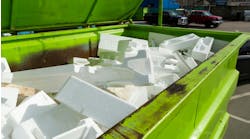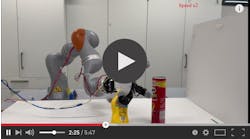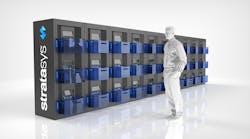After a long, slow build-up, additive manufacturing has come a long way very quickly this decade.
New technologies and breakthroughs have made 3D printing easier to use, more stable, and more practical in almost any setting—from grade school labs to jet engines, and everything in between.
Meanwhile, new materials and deposition techniques have made 3d-printed objects far stronger more useful than many ever thought possible.
But the core technologies behind these tools still carry some major roadblocks that prevent them from delivering on the (admittedly outlandish) hype and promise of the industry.
Take Fused Deposition Modeling (FDM), for example, This 3DP technique—invented by Stratasys co-founder and current CIO, Scott Crump, back in 1989—deposits molten plastics in thin, careful layers in a confined space to create its builds.
FDM is really what set the 3D printing industry on fire this century, unlocking new, exciting capabilities for hobbyists, engineers, and manufacturers alike. But it also has a few issues.
Size, for example, has always been confined to the rather small envelope built into the machine. Bigger machines can make some larger parts, of course, but there is a limit to how far you can take this—if you want to 3D print a full car, for example, you would need a 3D printer at least as large as a car.
And then there is scale. FDM is not a fast process (yet), which means that every machine has to be dedicated to a single job for many, many hours (or days) to compete. The only way to expand output is to buy and dedicate more machines to the job, which then means additional personnel to tend and monitor their builds.
If additive manufacturing is going to make progress in the manufacturing industry, it needs to hack these issues and bring the volume and scale that manufacturers really need.
And that, it seems, is exactly what Stratasys is doing.
Last year, the company tackled the issue of size with its Infinite-Build 3D Demonstrator. The machine literally turned FDM on its side to build parts of potentially infinite length. Ford is already at work with the technology to see what it can do for them.
Last week, Stratasys did it again.
At RAPID, the company unveiled another new concept in 3D printing, the Stratasys Continuous Build 3D Demonstrator.
The new platform puts multiple 3D print cells together in a modular unit that works together to produce a continuous stream of multiple products or customizations of them.
It's basically an additive vending machine—the part designs are fed into the cells through a central, cloud-based architecture and are then built in a continuous, autonomous stream of productivity without much need for any human intervention. Once completed, the parts are spit out into handy bins and the whole process starts over again.
There are a whole host innovation and features for this innovation—most of which are noted in the video above—but the fundamental point is this:
Besides overall speed, there are two main roadblocks standing in 3d printing's way: size and scale. With these two innovations, it looks like the industry might be ready for its true industrial rising.











